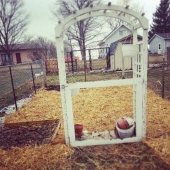I've thought about this concept for some time.
Picture your average bowl where deposits are made.
Both man-made and sawdust...
Ideally I would use sawdust inoculated with healthy mycelium.
Hazard of being a mushroom farmer, I use mushroom waste for everything.
So this material drops straight down like 5", and then is pushed forward vertically through a 5"-8" tube.
Moved forward with a piston style pump manually operated. Maybe like a pump on the floor you step on.
The layers of dookie and mycelium hemp sawdust moves forward with each piston pump and additional dookie layer.
Now with a properly insulated pipe there ought to be a temperature increase
enough to kill negative pathogens.
cool things about mushrooms to keep in mind.
》These tree loving fungi is a master of collecting oxygen.
Now it's purpose is to be that oxygen for the
poop pipe.
》Another cool mushroom fact is that this mushroom is VERY good for us protein good carbs minerals antioxidants vitamin a b c d you get the idea.
》Mushrooms love supporting good healthy things in our body and good healthy bacteria too. Its proven to be one of the best prebiotics and great at removing free radicals.
》You could then discern with logic that the same mushroom that supports our HEALTHY BACTERIA would continue to support those healthy bacteria after it has left your body.
Ok mushroom rant over. Let's continue down the poop pipe.
This perhaps 30 ft long tube straight away from your house then deposits into some marshy land which is of
course managed with a high
carbon layer. More sawdust/ hemp
Thats how one can traverse any bog. Mooooooore CARBON!
Once moved out of the pipe it may not be 100% broken down but will still be an option for cattails and maybe willows on the high ground proceeding the marsh.
So there it is. The basic principle anyway.
Please feel free to criticize and nit pick.
I would still like to think this is a real option to help the masses overcome the fear of poop, and to realistically address Humanure management that is viable safe and efficient.
Mush love,
Rachel the fungi farmer









 1
1

















 1
1


































 1
1




 1
1




 1
1











